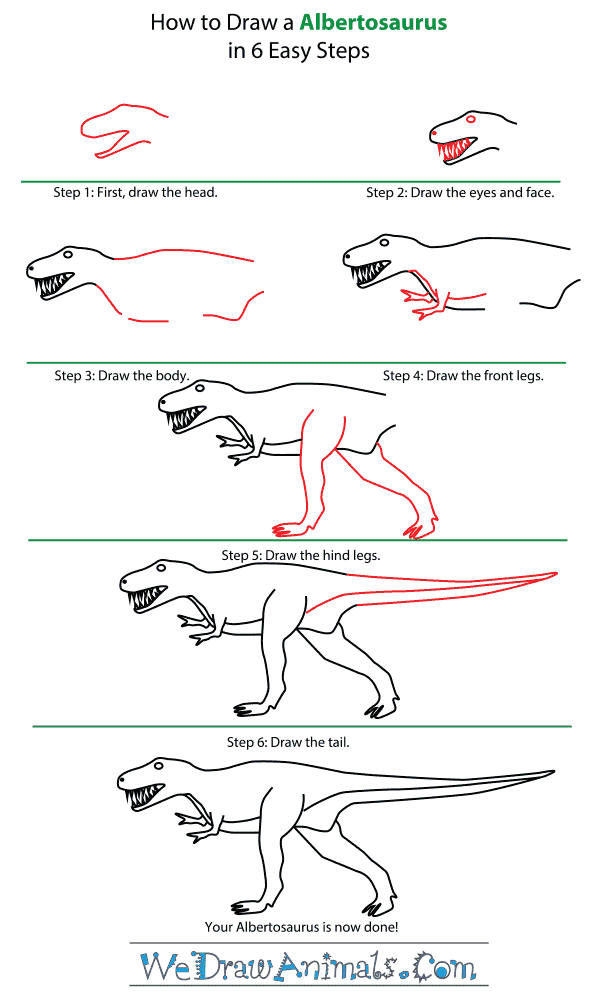In this quick tutorial you'll learn how to draw an Albertosaurus in 6 easy steps - great for kids and novice artists.
The images above represent how your finished drawing is going to look and the steps involved.
Below are the individual steps - you can click on each one for a High Resolution printable PDF version.
At the bottom you can read some interesting facts about the Albertosaurus.
Make sure you also check out any of the hundreds of drawing tutorials grouped by category.
How to Draw an Albertosaurus - Step-by-Step Tutorial
Step 1: First, draw the head, with a large oval shape for the top part of the skull and a narrower shape underneath for the bottom jaw. Leave a wide gap between to show the Albertosaurus’ mouth open.
Step 2: Draw the eyes and face, with a large circle for the eye, a smaller circle at the end of the head for the nostril, and large, sharp teeth in the mouth.
Step 3: Draw the body, using a slightly bowed line for the back, not much lower than the top of the head. Draw a series of lines to show the slop of the bottom of the neck, the underside of the dinosaur, and a V-shape behind the legs and under the place where the tail begins.
Step 4: Draw the front legs, which like the T-Rex are short with tiny two-fingered hands at the end. Make sure to include a line, starting under the jaw and going past the armpit, which shows the pattern of the Albertosaurus’s stomach.
Step 5: Draw the hind legs, which are very long, with large thighs and narrow lower legs. The feet are large and flat with three sharp toes.
Step 6: Draw the tail. This will go straight out from the back and be very long, because theropod dinosaurs like Albertosaurus carried their tails this way for balance.
Interesting Facts about the ALBERTOSAURUS
The Albertosaurus is a member of the dinosaur group and the scientific term for them is A. sarcophagus. Their name “alberto-saurus” means “Alberta-lizard” which refers to the location of Alberta, Canada in which the bones are found. The term “sarco-phagus” is a Greek word that means “flesh-eater” in English. They were a predator with two legs, two short arms, a very large head, and dozens of big sharp teeth.
Did you know?
- The animal was first documented in 1905.
- Their body was over 30 feet long.
- The head was more than 3 feet long.
- This species could weigh almost 4,000 pounds.
- They had about 767 pounds of force in their bite.
- Their mouth had at least 58 teeth shaped like bananas.
- The creature had 2 claws on each hand.
- They could walk about 13 miles per hour.
his animal had small crests in their skull above the eyes, perhaps used to attract a mate. Adults of this species were the top predators in their geographical region. As multiple fossils were found together, it is implied that these animals traveled together.







